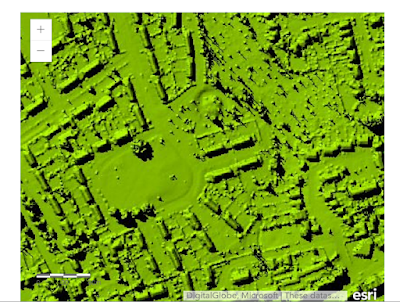Mapping Belfast's hidden river Farset

The Farset is the now mostly underground river that is said to give Belfast its name*. There has been talk of 'daylighting' the river in places, ie uncovering it from its culverted fate to flow openly again. This could boost nature and air quality and also potentially alleviate flood risk. Belfast's underground rivers have been linked to some of the flooding experienced by the city. Most articles about the Farset focus on the stretch from High Street to the Lagan. While it's not universally known that a river of some importance in the city's development once flowed here, I'm betting a fair few High Street shoppers know of its existence underfoot. But on the Google Map below I've expanded outwards to try to map some of the Farset's known locations along its whole course, while guessing at a few more. " The lost river that gave Belfast its name " is an interesting 2013 article from the Belfast Telegraph which has provided the basis for many
